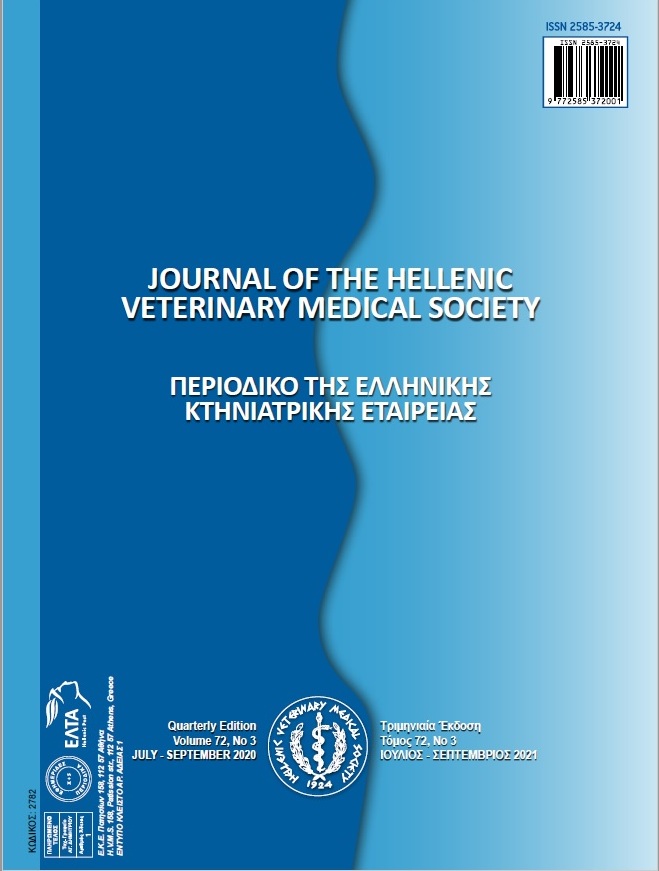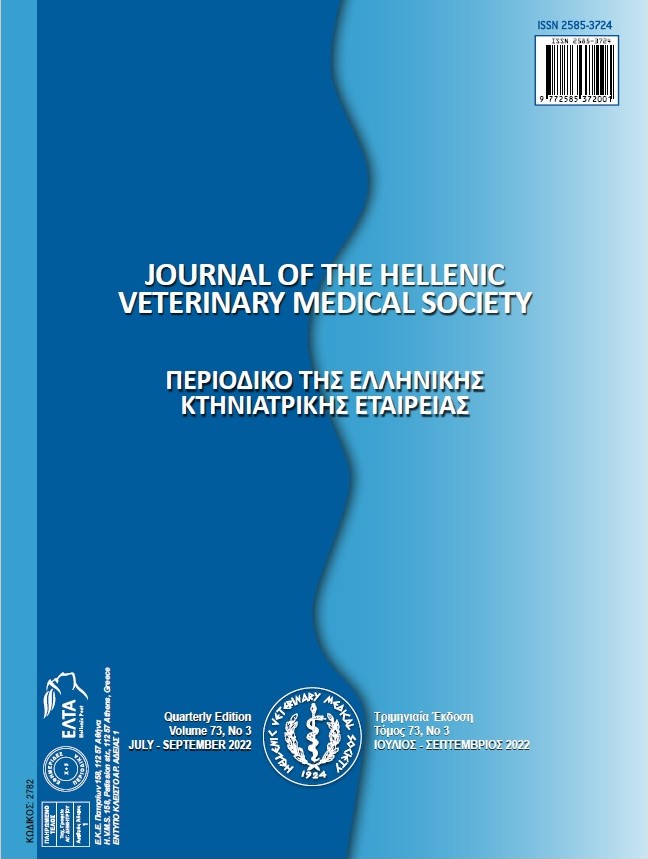Serological diagnostic potential of the 38-72 kDa somatic antigen of Gastrothylax crumenifer in buffaloes using the Indirect Enzyme-Linked Immunosorbent Assay
Abstract
Paramphistomosis, caused by digenetic trematodes of the superfamily Paramphistomoidea, causes heavy economic losses in terms of reduced fertility, milk and meat production in the livestock industry. In the present study, somatic and excretory secretory antigens isolated from 500 live Gastrothylax crumenifer were assessed for their diagnostic potential by using an antibody detection enzyme immunoassay. Prior to the enzyme immunoassay, the somatic and excretory/secretory (ES) antigens of G. crumenifer were subjected to SDS-PAGE and Western blot (WB) for the detection of immunogenic proteins. Indirect ELISA analysis was performed on sera from buffaloes naturally infected with G. crumenifer, with control sera of buffaloes infected with Gigantocotyle explanatum, Fasciola spp., Cotylophoron /Paramphistomum spp. The SDS-PAGE results of the somatic products of G. crumenifer identified proteins were between 10-123 kDa, showing a maximum abundance of 10, 15, 25-28, 36, 38-72, 95-123 kDa proteins. The most abundant proteins recorded in ES product were ≥95, 72, 55 and 40 kDa. The antigenic analysis of somatic proteins using WB revealed reactive polypeptides of a size between 55-70 kDa, while metabolic extracts did not show reactivity with naturally infected buffalo sera. The sensitivity and specificity of the ELISA test for 38-72 kDa somatic antigens were 85.71% and 89.74%, respectively. The cross-reactivity with other trematode sera was 16-20%. Antibodies were tested against the 38-72 kDa somatic antigens, and 19.69% (39/198) of buffaloes were found positive, while 12.1% (24/198) presented infection in the fecal/postmortem examination. The study confirmed that ELISA established for the 38-72 kDa somatic antigens of G. crumenifer had diagnostic potential against paramphistome infections.
Article Details
- Come citare
-
Ali, R., Afshan, K., Fuentes, M. V., & Firasat, S. (2022). Serological diagnostic potential of the 38-72 kDa somatic antigen of Gastrothylax crumenifer in buffaloes using the Indirect Enzyme-Linked Immunosorbent Assay. Journal of the Hellenic Veterinary Medical Society, 73(2), 4105–4112. https://doi.org/10.12681/jhvms.26565
- Fascicolo
- V. 73 N. 2 (2022)
- Sezione
- Research Articles

Questo lavoro è fornito con la licenza Creative Commons Attribuzione - Non commerciale 4.0 Internazionale.
Authors who publish with this journal agree to the following terms:
· Authors retain copyright and grant the journal right of first publication with the work simultaneously licensed under a Creative Commons Attribution Non-Commercial License that allows others to share the work with an acknowledgement of the work's authorship and initial publication in this journal.
· Authors are able to enter into separate, additional contractual arrangements for the non-exclusive distribution of the journal's published version of the work (e.g. post it to an institutional repository or publish it in a book), with an acknowledgement of its initial publication in this journal.
· Authors are permitted and encouraged to post their work online (preferably in institutional repositories or on their website) prior to and during the submission process, as it can lead to productive exchanges, as well as earlier and greater citation of published work.





